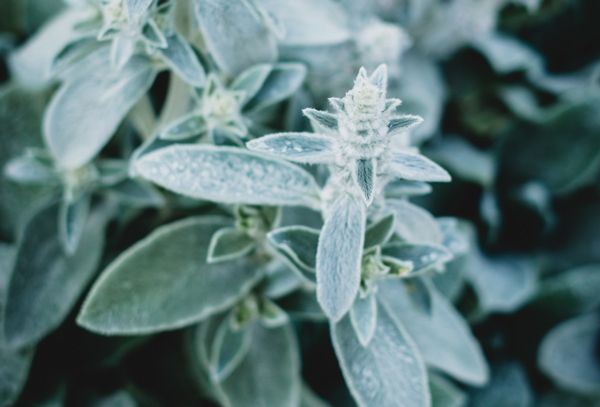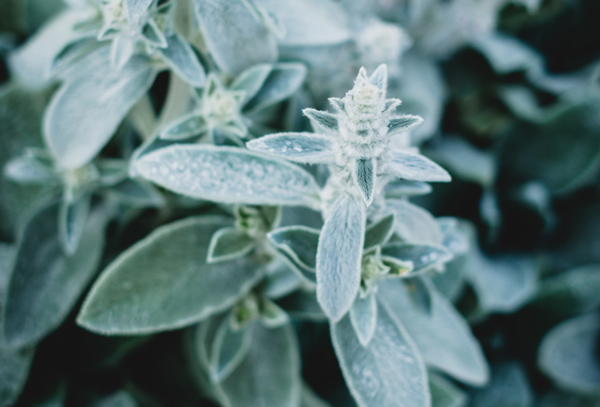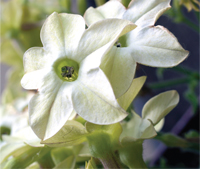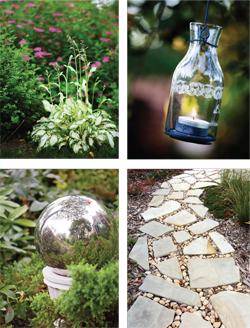By the Light of the Moon | Summertime Moon Gardens


There is a special sort of magic in the garden at twilight on summer evenings. As the fireflies come out to greet the evening air, the world seems to slow down just a little bit. There is plenty to appreciate in the garden at night, especially in moon gardens, which are designed to glow in the twilight and shimmering moonlight.
The basic principle behind moon gardens is that they stand out in the darkness of the evening hours. White flowers seem to float while their green stems and leaves fade into the darkness. The lighter colors of variegated and silvery foliage pop while fragrant blooms announce their presence, filling the air with their scents. Night-blooming plants make the evening garden a destination.
Flowers in the moon the garden don’t necessarily have to be white, although there are a variety of shades of white available that will keep your garden looking far from monolithic in color. Soft creams, pinks and yellows can also offer a bit of ethereal beauty to the garden in small doses.
There are any number of white blooming flowers—both perennials and annuals—that can be planted to create an everchanging array of blooms throughout the growing season. White daffodils, tulips, hyacinths, bleeding hearts, lupines, dogwoods, azaleas and iris bring spring to the moonlight garden. Shasta daisies, yarrow, Queen Anne’s lace, clematis, white coneflowers, zinnias, butterfly bushes and hydrangeas bloom during summer months. “Sweet Autumn” clematis, white dahlias and mums bring the florals into the late summer and early fall.
Fragrant bloomers don’t have to be white to stand out in the evening, although there are some that are both pale and fragrant. Peonies, magnolias (both southern and saucer, aka teacup), viburnum, roses, lilacs and lilies of the valley fill the air with their sweet perfume while attracting the eye in the moonlight. Mock orange, honeysuckle, wisteria and lavender also offer scents that will fill the surrounding air even after dark.
Having flowers that only bloom at night will tempt you to step out into the garden even after the longest summer day. Evening flowers, which generally don’t open until late afternoon or dusk, often have fragrant blooms to attract evening pollinators. Moonflowers, a relative of morning glories, have large, white, fragrant blooms, as do angel trumpets and white flowering tobacco. Other evening blooming plants include four o’clocks and evening primroses.
 Flowers are not the only source of brightness in a moon garden. Silvery plants, like dusty miller, lambs ear, sage and artemisia (aka silver mound) add colorful contrast both day and night. Variegated leaves of hostas, coleus, cannas and even some ornamental grasses—particularly those with lighter color around the edges—will glimmer in the moonlight.
Flowers are not the only source of brightness in a moon garden. Silvery plants, like dusty miller, lambs ear, sage and artemisia (aka silver mound) add colorful contrast both day and night. Variegated leaves of hostas, coleus, cannas and even some ornamental grasses—particularly those with lighter color around the edges—will glimmer in the moonlight.
 A good seating area is conducive to spending time in your evening garden. Consider placing your moon garden near your deck or porch, with comfortable seating… perhaps an Adirondack chair, so you can lean back and gaze at the stars? Use light-colored stepping stones or pea gravel to create a more visible walking path, and accent with solar-powered path lights for safe passage through the garden at night.
A good seating area is conducive to spending time in your evening garden. Consider placing your moon garden near your deck or porch, with comfortable seating… perhaps an Adirondack chair, so you can lean back and gaze at the stars? Use light-colored stepping stones or pea gravel to create a more visible walking path, and accent with solar-powered path lights for safe passage through the garden at night.
Soft ambient light helps add to the evening’s atmosphere. A few scattered candles will set the scene, as will twinkle lights strung on branches. There are also many solar-powered lantern styles available that offer a gentle glow while subtly illuminating nearby foliage.
A decorative element or two will add the finishing touch to your evening spaces. When selecting, look for pieces that have a bit of sparkle to add a little enchantment… a metallic gazing ball, a light-colored statue or an objet d’art with a bit of glimmer, to make it stand out in the glow of the moonlight.
Finally, don’t overlook the element of sound—twinkling wind chimes, a softly bubbling water fountain, or even just the sound of ornamental grasses fluttering in the breeze. Adding some soft background noise adds to the atmosphere of calm and relaxation in the moon garden.
Moon gardens are meant to be an oasis at the end of the day, making them the perfect garden for a busy gardener to enjoy every day of the week. With a collection of pale blooms, bright foliage, and thoughtful touches, you can create a magical outdoor spot for those long summer evenings.
annuals, azaleas, bleeding hearts, butterfly bushes, Clematis, dogwoods, Fragrant bloomers, hyacinths, hydrangeas, iris, lilacs, lilies of the valley, lupines, magnolias, Night-blooming plants, peonies, Perennials, queen anne's lace, roses, Shasta daisies, Tulips, variegated and silvery foliage, viburnum, white coneflowers, White daffodils, White flowers, yarrow, zinnias






